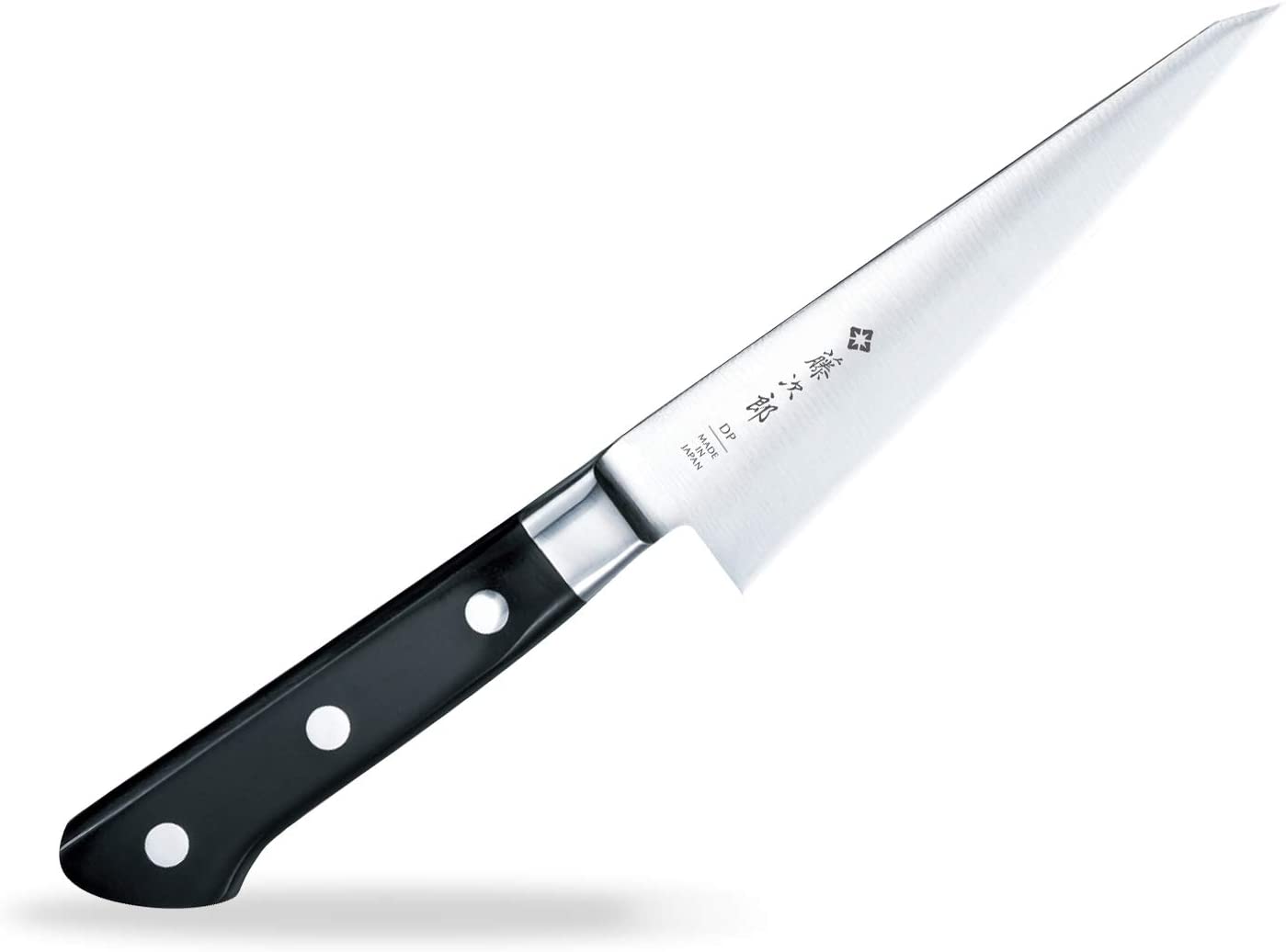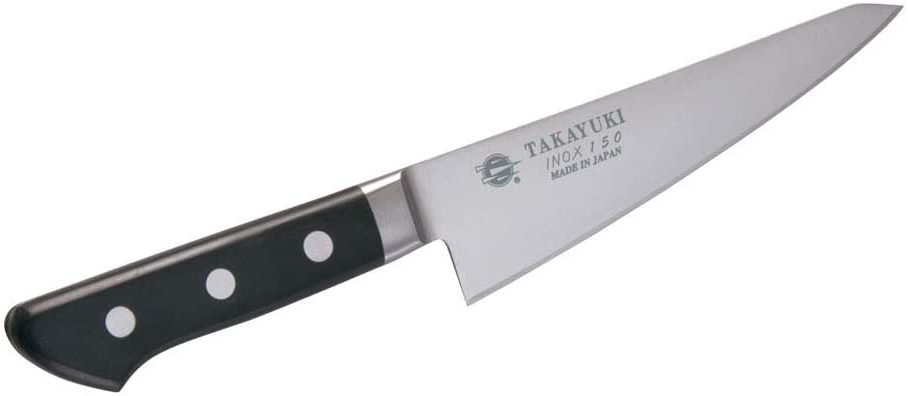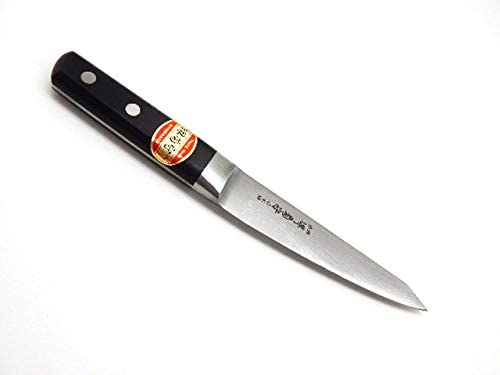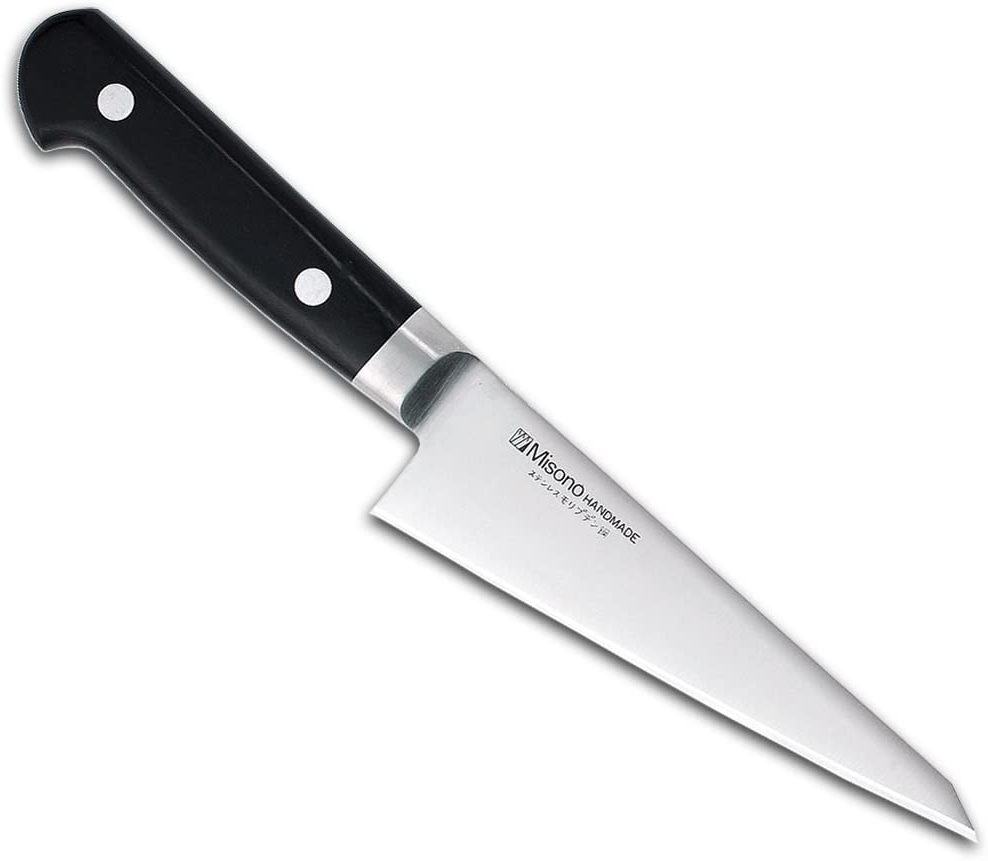5 Best Honesuki Japanese boning knife | Find your absolute favorite
If you like to buy fresh chicken and seafood to cook your favorite recipes, you know how important a good boning knife is.
The best honesuki knife is this Tojiro because it is a versatile boning knife that’s perfect for chicken and other small animals. It has a razor-sharp blade, a pointed tip, and a traditional Japanese honesuki shape.
But there are more options and I’ll go into detail about when to use which.
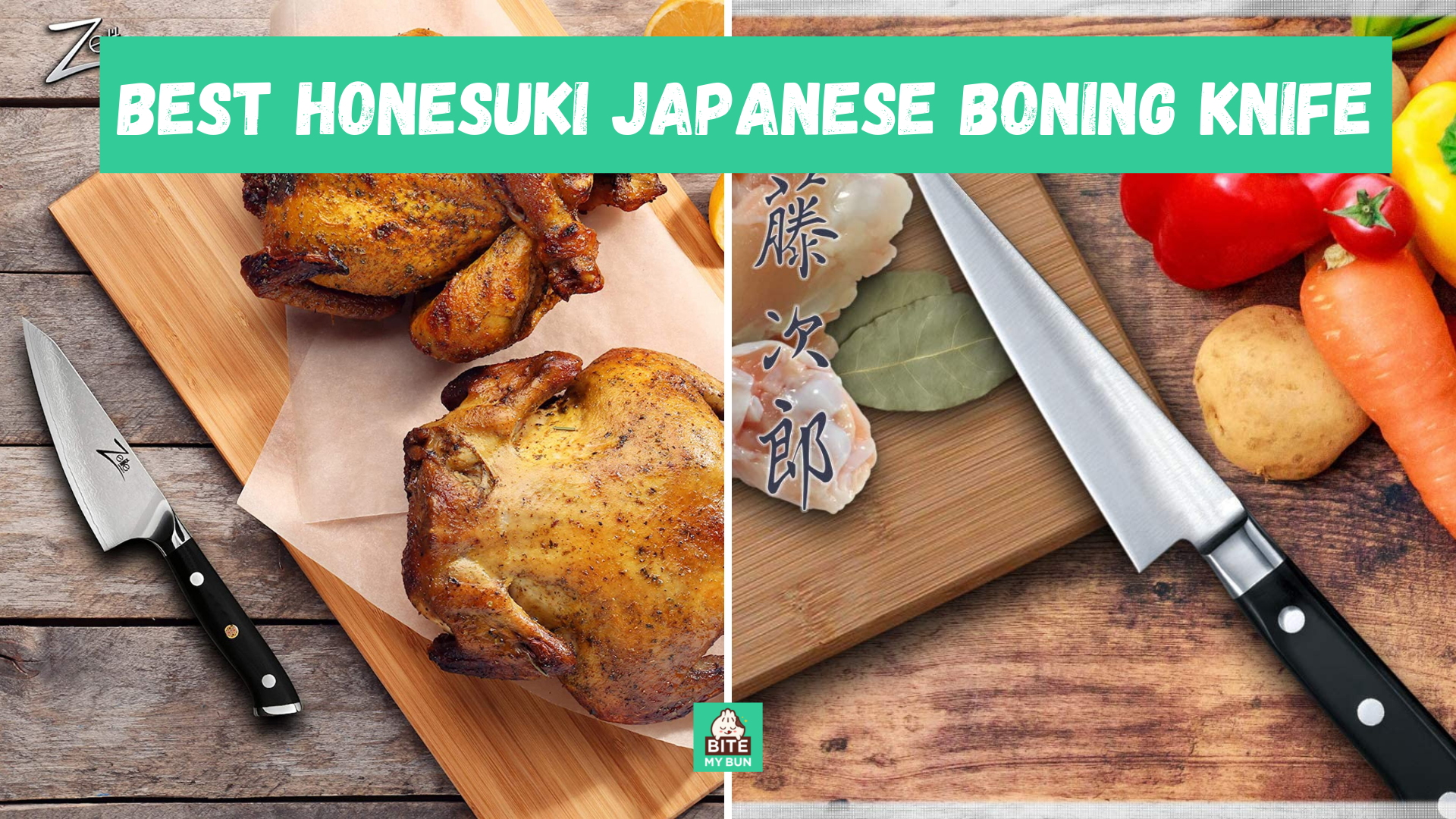
Here are the 5 must-have honesuki knives to try, and keep reading to see my full reviews:
Best overall honesuki knife
If you need a do-it-all boning knife, the Tojiro is an excellent option because it is barbershop-grade sharp, hard, and stiff.
Best budget honesuki knife
The reason I really like this smaller boning knife is that it only weighs 4.4oz (125g), so your hand doesn’t get tired when you work with it.
Best honesuki knife for professional chefs
The Sakai Takayuki knife is truly one of the top-rated honesuki blades. It’s preferred by chefs because it’s made in Japan of high-quality inox molybdenum stain-resistant steel.
Best Maru-type (western-style) honesuki knife
This is a Western-style boning knife which means that the blade and handle are the same width.
Best honesuki knife for deboning chicken

Check out our new cookbook
Bitemybun's family recipes with complete meal planner and recipe guide.
Try it out for free with Kindle Unlimited:
Read for freeIn this post we'll cover:
Honesuki knife buyer’s guide
A honesuki knife has a specific build and design. The knives that are labeled “honesuki” have the characteristics that you need to debone chicken and small animals or fish.
But there are still some features to consider when picking the best knife for your kitchen.
Kaku vs maru boning knife
Kaku is an eastern Japanese-style knife. It has a triangular-shaped blade where the bottom is wider and the top is narrow and pointed.
Maru is a western type of boning knife where the width of the handle and blade is the same.
Size
The honesuki knives I’ve shared range in size between 4.5 inches to 6 inches. The size refers to blade length.
These sizes are all excellent for slicing, cutting, and deboning meats.
If you are going to go for large birds like turkeys, you might want to choose the biggest knife. With it, you can also butches some lamb legs or large trout.
But, if you stick to chicken, a 4.5 or 5.3-inch knife is a perfect size. Also, if you have small hands, a smaller knife is easier to maneuver.
Handle
A resin handle is the best because it is very long-lasting. Resin is a strong, high-quality handle material that is comfortable to hold but also resistant to the wear and tear of frequent use.
A composite wood handle is also good and quite comfy to hold. You won’t see any rust or stain marks on composite wood handles.
Don’t choose anything with a cheap plastic handle as it can come off or break and it’s a potential safety hazard.
Material
Don’t settle for any blade material. The best material for a honesuki knife is carbon steel or molybdenum stain-resistant steel.
This means that the knife is extremely well made, durable, and doesn’t rust, even when exposed to water.
The steel also ensures that the knife stays sharp. After all, the thin, sharp knifepoint is essential for easy deboning.
Price
Most honesuki knives cost over $70 and can go up to $500 in some cases. But the ones I recommend are between $70-$170.
These are high-quality knives and many are made in Japan by skilled craftsmen. They are not to be mistaken for cheap supermarket boning knives.
You’ll notice the difference a quality utensil makes by simply looking at how sharp and perfect the edge of the blade is.
Also check out my complete guide on types of Japanese BBQ
Best 5 honesuki knives reviewed
I want to get into the reviews right now and I am comparing the best honesuki knives on Amazon. They are all in a similar price range but that’s because professional-grade honesuki blades are expensive.
These aren’t the kind of cheap knives you can pick up for less than ten bucks. If you’re serious about upgrading your knife game, then keep reading.
Tojiro 6 inch
- Ultra sharp VG-10 steel
- Sturdy composite wood handle
- Very small blade
- material: VG-10 steel
- size: 6-inches
If you need a do-it-all type of boning knife, the Tojiro is an excellent option because it is barbershop-grade sharp, hard, and stiff.
Price-wise it’s one of the best value products because it has a single bevel design and a perfectly angled edge for enhanced precision and it’s also made of the best carbon steel material.
It’s the kind of knife that will make cutting the meat and fat off the bones a hassle-free experience and since it’s easy to hold, you won’t feel unsafe using it.
With the sharp tip, you can really poke at that cartilage and soft bone to make the meat fall off faster.
I can even compare it to the sharpness of a scalpel if that helps, so imagine how well you can debone chicken, turkey, fish, and of course bigger meat cuts.
It works especially well when you trim fat because you can actually remove almost every single bit of fatty tissue.
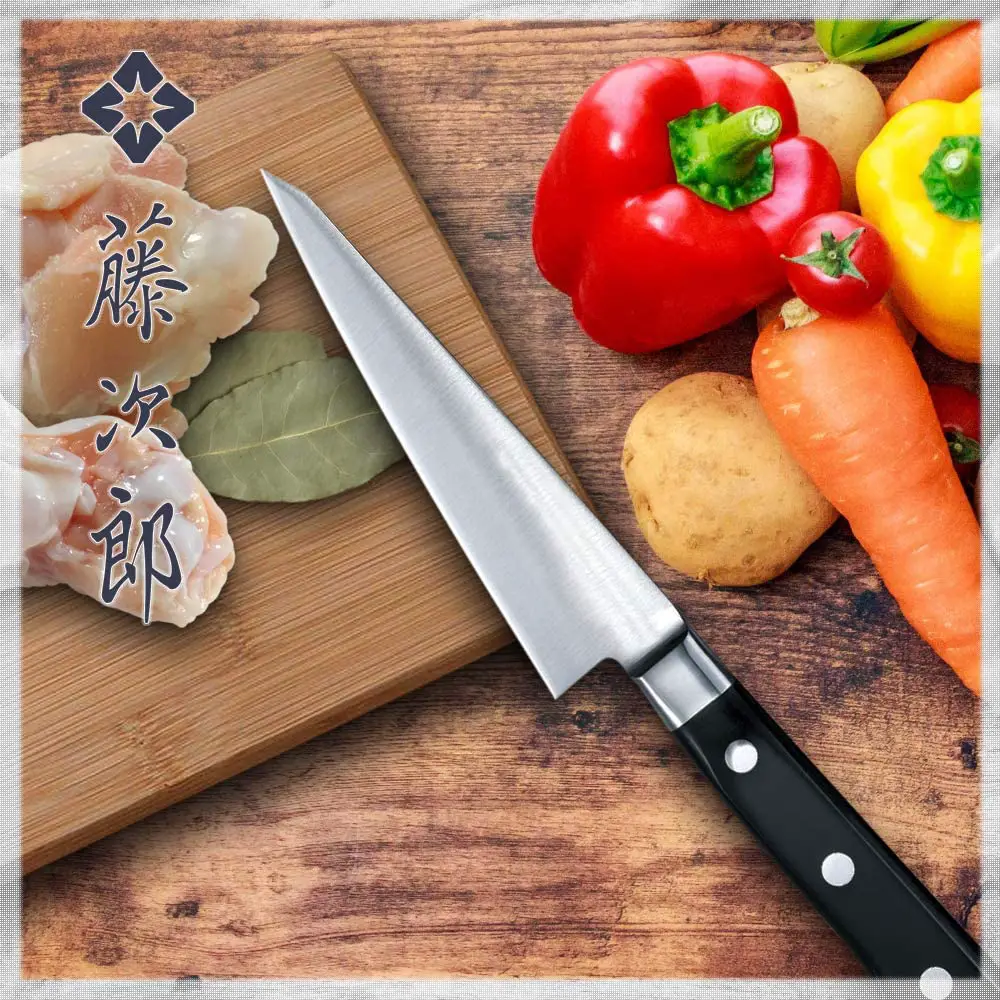
This Japanese knife is the perfect size for the average cook looking for an all-purpose blade. The knife is exceptionally well made with 3-ply clad construction. The core is made of VG-10 super steel and encased in layers of rust-resistant steel.
It’s got a 60 on the Rockwell hardness scale, so you can be sure the blade is hard and sturdy. With the 9-12 degree blade angle and thin upper blade, you can cut in one go.
While it’s mostly a single bevel knife, it is very precise, sharp, and you can use it for almost any cutting task. The composite wood handle makes it comfortable to hold.
It is also rust-resistant and easy to wash and it doesn’t warp or dull for years.
Zelite Infinity
- Sharp high-carbon steel
- Great value for money
- Carbon steel requires a lot of maintenance
- material: high carbon stainless steel
- size: 4.5-inches
Alright, when I say budget, I don’t mean very cheap, but this Zelite knife is still cheaper than all the other Japanese boning knives.
It also depends on the size, but the 4.5 inch is the best for precision boning of any meat or seafood and it can even be used to core tomatoes and other veggies.
It has a riveted and rounded handle which makes it one of the most comfortable to use.
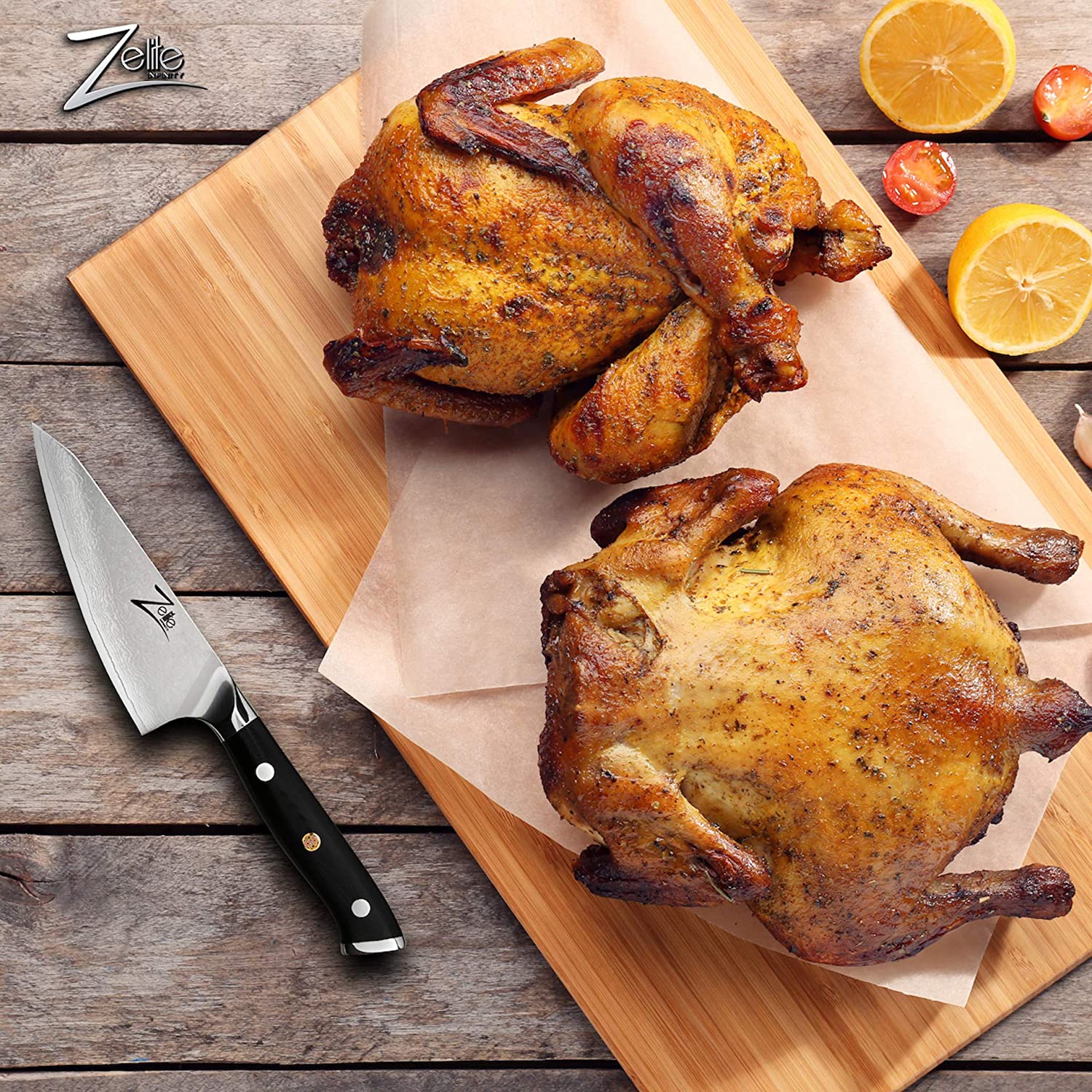
Sometimes holding a boning knife can be challenging, especially when you go for those hard cuts at odd angles. But this one doesn’t slip from your hand.
In terms of the build, the honesuki knife is made of 67-layer high carbon stainless steel (Damascus steel). This means it is resistant to rust and also has a sharp blade.
The reason I really like this smaller boning knife is that it only weighs 4.4oz (125g), so your hand doesn’t get tired when you work with it. It’s really comfy and it has a tapered bolster, which gives you more control.
The blade is honed to 12-15 degrees on each side, which is common with Japanese blades and it’s one of the main reasons it’s so versatile. You can use it for boning a large fish, some lamb thighs, but then you can also use it to cut up steak.
Tojiro vs Zelite
- Both of these knives are in a similar price range, but the Tojiro is a bit more expensive.
- Size: the Zelite is 4.5 inches, compared to the large 6-inch Tojiro.
- The Tojiro is a classic Eastern-style poultry boning knife with a thin blade whereas the Zelita has a wider blade. It is also suitable for deboning larger meat cuts like lamb.
- The Zelita’s triangular blade shape is slightly harder to control so the Tojiro is more precise.
- Tojiro is one of the sharpest knives and maintains its sharpness for a longer time because of the skinny blade.
The bottom line is that these two boning knives are similar in price range but their design differs.
If you want a traditional knife, go for the Tojiro. But, if you want something more versatile and affordable, opt for the Zelite.
Sakai Takayuki Inox
- High quality inox steel
- Durable resin handle
- On the heavy side
- material: inox steel
- size: 5.9 inches
The Sakai Takayuki knife is truly one of the top-rated honesuki blades. It’s preferred by chefs because it’s made in Japan of high-quality inox molybdenum stain-resistant steel.
The handle is made of resin and overall it’s a long-lasting and damage-proof boning knife. One thing to note about resin that it’s water-resistant and neither the blade nor the handle gets damaged.
The Takayuki is a single bevel knife with a hardness of 60 and a weight of 6.08 oz. It’s a bit heavier than some other knives with a wooden handle but it’s also more durable.
One of the best features is the pointed tip which makes it easy to cut through very hard muscle and cartilage. Since you have a firm stable grip on the knife, you can cut and slice any meat.
The Sakai brand is one of Japan’s best with a long history of over 600 years of cutlery craftsmanship.
I recommend this boning knife for those looking for a premium blade that doesn’t need frequent sharpening. It’s perfect for busy kitchens and restaurants where there a lot of meat boning.
Sakai Kikumori Nihonko
- Sharp high-carbon steel
- Great for cutting hanging meat
- Not very traditional
- material: high-carbon steel
- size: 5.3 inches
The other Sakai knife I just mentioned above is a Kaku type, which just means Eastern-style but this is a maru type of honesuki.
This is a Western-style boning knife which means that the blade and handle are the same width.
Thus, the blade is thinner than many other Japanese boning knives. What makes this shape interesting is that you can hold the knife overhand-style.
So, with this Nihonko knife, you can cut strips of meat from hanging chickens and other meats. Thus, it can be a useful tool for cutting smoked meats too or jambon.
It’s also great for boning ducks, turkey, and small game fowl. And if you just want to use it the classic way for boning chicken, you can definitely do so too.
The design is quite simple and this knife is extremely lightweight and easy to hold. The downside is that it’s easy to cut yourself because the handle is not quite as ergonomic as some of the other similar knives.
If you’re in the Osaka region, you’ll hear that this honesuki style is called “Hankotsu” as that’s the regional term for it.
Sakai Takayuki vs Sakai Nihonko
There’s no doubt that Sakai is one of Japan’s premium cutlery makers. Let’s compare their two honesuki knives:
- The Takayuki has a wider blade, while the Nihonko is a Maru type, meaning it has a narrow blade.
- Nihonko is similar to the traditional Western-style boning knife so the blade and handle are the same width. It might be a bit hard to get used to deboning with the Japanese method of holding the meat.
- The Takayuki knife has a resin blade that is superior to the composite wood handle of the Nihonko knife.
- Since the Nihonko is cheaper than the Takayuki, it’s a better budget purchase. Although the Takayuki is made of even better materials.
The bottom line is that both of the honesuki are made by the same Sakai brand and they are both highly rated.
It all comes down to the particular shape of each and if you want an authentic Japanese boning utensil, the Takayuki is a great choice. But, if you want a simple, Western-style made in Japan knife, the Nihonko is excellent.
Misono Molybdenum
- Lightweight molybdenum high-carbon steel
- Asymmetrical bevel of 70:30 for a thin cutting edge
- Not great for other tasks
- material: molybdenum steel
- size: 5.6 inches
Chicken thighs are hard to debone with a big knife because you really need a thin blade but with this Misono poultry knife, you no longer have to struggle with such issues.
Traditional western boning knives have a curved blade, but this Japanese one doesn’t and it actually gives you an advantage because it’s very stable and sturdy in your hand, allowing for higher precision when cutting.
If you’re on the market for a replacement for your western boning knife, you will appreciate how sharp and lightweight this Misono 5.6″ is.
It’s the kind of thin profile knife that stays sharp and can be sharpened for many years to come. This is a great honesuki for chicken, especially for deboning things and drumsticks or removing the wings.
Misono makes a special molybdenum high carbon steel boning knife that is lightweight and stain-resistant. This medium-sized knife is the ideal poultry boning knife.
What makes it unique is the asymmetrical bevel of 70:30. This creates an extremely sharp knife, similar to Japanese single-edged knives.
It means that the sharpness is concentrated on the front of the blade at a slightly steeper angle than at the back. Therefore, the cutting edge is very thin.
Takeaway
If your cutlery collection lacks a good poultry boning knife, then any of the honesuki on our list can do the job very well.
Using a boning knife for the first time can be intimidating, I’ll admit that. There’s a fear of cutting your fingers so that’s why you need a knife with a sturdy non-slip handle and a long blade so you don’t have to struggle to get into the meat.
The Tojiro Honesuki is a great beginner-friendly honesuki that has a 6-inch blade. The blade is not thin like the Sakai knives so it’s easier to use.
It will make life easier and once you have a super-sharp quality knife in your collection, you won’t regret it!
Now, you can start buying fresh poultry and do the deboning at home without overpaying for pre-cut meat at the butcher shop.
Found your favorite honesuki knife? Try it out on this delicous Chicken Inasal Recipe (Just as finger licking good as the original!)
Check out our new cookbook
Bitemybun's family recipes with complete meal planner and recipe guide.
Try it out for free with Kindle Unlimited:
Read for freeJoost Nusselder, the founder of Bite My Bun is a content marketer, dad and loves trying out new food with Japanese food at the heart of his passion, and together with his team he's been creating in-depth blog articles since 2016 to help loyal readers with recipes and cooking tips.

